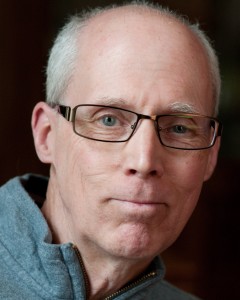A Tale of Two Classrooms
- likoau
- Aug 31, 2015
- 3 min read
Capacity: The maximum amount that something can sustain.
Raleigh N.C., real estate developer Bill Fletcher shared with us that the decision to integrate schools socioeconomically in Raleigh was a decision about capacity. Not building capacity or funding capacity or cafeteria capacity, but a teacher’s capacity to teach (and a student’s capacity to learn). Fletcher saw clearly that teachers in urban Raleigh classrooms did not have the capacity to meet all the needs of students in front of them.
It is a tale of two classrooms. One of my daughters was educated k-12 in the Webster Central Schools; the other began kindergarten in the city and is now a senior at the School of The Arts. Their respective third grade classrooms tell the tale. The Webster student began third grade fully meeting state standards, having arrived in kindergarten already able to read. Her classmates, by and large, were similarly prepared and encouraged to learn as teams working on class projects.
Beth Laidlaw teaches philosophy at Monroe Community College and is a member of the GS4A leadership team.
My special needs student arrived at her third grade “inclusion” city classroom to a chaotic mess. District policy required 6 special ed children in her class of 22. My child is deaf and her special need was for a quiet learning environment in order to learn how to access sound via a Cochlear implant. The other 5 special ed students in her class had a range of behavioral needs that resulted in a classroom of continual emotional explosions. No student, not even the best general education student, could learn in this traumatic environment. As one student bit another, a third would scream obscenities or tear up learning materials. The teacher would spend hours and hours after school filling out the necessary forms to get the biters and screamers to a more appropriate learning setting. These were hours taken away from time she would have spent grading, planning lessons, communicating with parents, and attending staff meetings and professional development events. As a teacher, the toll of not being able to reach (let alone teach) your students is defeating. In this classroom, a student’s capacity to learn is subverted by the brain’s need to convert to protection mode. Learning doesn’t happen here.
Yes, there are buildings within the City School District in which classrooms are not chaotic and learning does happen consistently (Let’s replicate these!). And there are exceptionally gifted teachers in the district who take as part of their call the hours and hours of time outside the work day meeting their students’ extraordinary needs. Bless them. The reality, though, is that most students do not graduate on time, if ever.
In Raleigh, folks realized that urban teachers were being over utilized and suburban teachers were underutilized, given the needs of each population of students. Here in Rochester, our children’s capacity to learn is limited by the chaotic environment in which we’ve placed them. Our teachers’ capacity to teach is overwhelmed by the needs in the classroom. The Great Schools for All coalition’s research shows that classrooms in which fewer than 40 percent of students qualify for free or reduced priced lunch (FRPL) are classrooms in which all students learn to their full capacity because their teachers are able to spend precious energy on helping students learn.
Here are comparative graduation rates for the 2013-2014 year:[i] [ii]School DistrictGrad Rate for General populationGrad Rate for African-American Students% Free or Reduced Priced Lunch StudentsWebster Central Schools 93 96 12Wake County Public Schools 83 74 33Rochester City Schools 43 42
85
A case can be made that teachers in suburban classrooms with a few FRPL students are underutilized and that urban teachers with classrooms filled with FRPL students are drowning. Why are we at the Great Schools for All coalition so passionate about socioeconomic integration of classrooms?
Because we strongly believe that every child can learn and each child deserves a chance.
[i]2013 | NY STATE – Report Card | New York State Education Department Data Site. (n.d.). Retrieved August 30, 2015.
[ii] ACCOUNTABILITY AND TESTING RESULTS. (n.d.). Retrieved August 30, 2015.







Comments